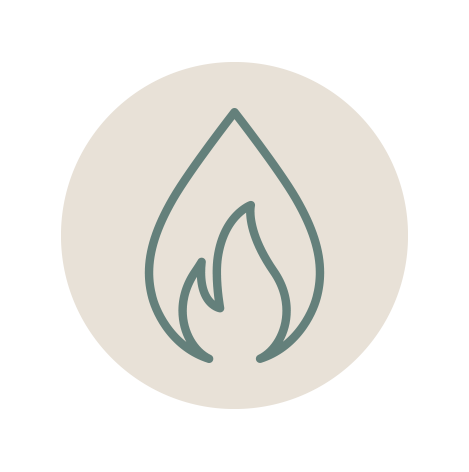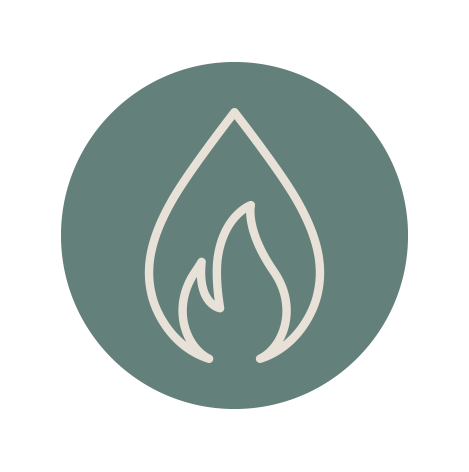

An open fire or log burner is one of the most effective ways to save on your energy bills and create a warm and cosy atmosphere in your home. These traditional heating methods offer not only an exceptional heat source but also an aesthetic appeal that adds charm and homeliness to your living spaces.
In addition the residual warmth emitted from a real fire continues long after its been extinguished, providing additional savings throughout the night when central heating might otherwise be used unnecessarily. Embracing this cost-effective approach not only reduces energy consumption but also creates a wonderful atmosphere during those cold winter evenings.
By harnessing the power of natural resources like wood, you can significantly reduce your reliance on electricity or gas-based heating systems, which in the current climate is highly desirable.
To maximize efficiency, there are two crucial components; A high quality stove and premium quality, dry hardwood logs. The stove should have good insulation properties that ensure minimal heat loss, whilst regular maintenance such as cleaning and chimney inspections will guarantee optimal performance whilst also preventing potential hazards, such as chimney fires.
Firewood should be dry, well seasoned, hardwood logs that will burn hot and continue burning without the need for constant relighting. If you’d like to find out more about the optimum wood for keeping your fire burning do read our guide to firewood types.

Preparation:
Make sure your fire is clean – it doesn’t have to be spotless but if there is a huge pile of ash underneath your grate the air will not be able to circulate and you won’t get a strong draw from the start, meaning your fire could easily go out.
Gather the items you need to get your fire stated.
Namely: Good quality fire mits to avoid burns, kindling, paper or firelighters, matches/ a lighting wand, good quality hardwood logs with a moisture content of less than 20%. If you are buying firewood from us you can rest assured all our logs conform to these standards.
NB: when collecting kindling material steer clear of painted or treated timber, as well as plastic and rubbish. These materials will likely release unpleasant smoke and toxins that could cause illness.
Lighting the fire
If using a log burner fully open the dampers to allow maximum airflow. Now loosely ball up some paper and place in the grate. Alternatively place a firelighter or two in the grate.
Next place a loose criss cross of kindling on top or build it in a teepee/ wigwam shape. The key here is to allow air circulation to encourage burning. As the fire begins to burn you can gradually add larger pieces of wood, just don’t overload the stove at the start as you don’t want to restrict the air flow. Before adding extra wood to your fire, be sure that any existing logs are burning properly. This will stop the fire from being overwhelmed and help you regulate the heat output.
NB: if you have a log burner ensure that door is shut allowing the fire to draw.
Maintaining the fire
Leave the dampers open for at least the first half and hour or until you have a fire that has been burning hot consistently for some time. As you have larger pieces of wood that are alight and burning well you can adjust the dampers to get the desired level of heat. The wider you open them the more heat is emitted, as you begin to close them the heat reduces.
NB: it is unwise to leave them fully open for longer periods as this result in an inefficient burn – equally if you close them altogether your fire will go out.

To keep a fire burning all night you will likely need to add a small amount of coal an hour or so before you plan to go to bed. If you have a lot of ash beneath you grate carefully remove the majority and then rake the coals towards the front of the stove.
Insert five to seven larger logs into a compact configuration behind the lit coals. Place each log consecutively in a line, parallel (East-West) to the front of the stove. As you continue adding logs, try and nestle them together as closely as possible. By the end, the log closest to the front of the fire should just touch your coal bed. Don’t place some crosswise or perpendicular (North-South) to the front of the stove as it can lead to more rapid combustion. No need for newspaper or kindling – with good seasoned wood and an already heated coal bed, you should be able to ignite your fire almost immediately.
Once you’ve loaded your stove, flames will appear fairly quickly and spread swiftly over the first layer of wood, gradually moving to the back. Now you can adjust the dampers – likely somewhere about 70% closed but this may take some experimentation depending on your burner.
In the morning you should still have some glowing embers that will quickly relight when you throw some dry, well seasoned, hard wood logs on them.